PIAGGIO MP3 250 / 400 / 500
When it arrived in the USA and Canada for 2007, the MP3 was arguably the biggest innovation to come out of the scootering world since the 80’s. It’s tilting 3 wheeled design proved quite polarizing, with most people either loving the idea or being completely disinterested.
The MP3 quickly diversified into a range of sizes (250 – 500cc) and body styles, however this model had lukewarm sales in North America and was discontinued after 2012 (Canada) or 2013 (USA).
However, Piaggio wasn’t done yet and returned the MP3 to North America 2016 as the MP3 500 sporting new ABS and traction control. See the “models” section on this page for the full breakdown of Piaggio’s offerings. This model remains on sale as of 2019.
Three Wheels?
While the MP3 isn’t the first three wheeled scooter (see Honda Gyro), the MP3 is the first to locate that extra wheel up front. The idea of having dual wheels up front is definitely easier to ride in sketchy conditions (slippery roads, riding on bus rails etc), so it’s mostly a question of if you prefer that additional measure of safety, or would rather have a lighter, cheaper and simpler traditional setup. Even if you aren’t interested in the MP3, consider taking one for a test ride at your local dealer just to better understand the dramatic difference that three wheels makes.
The cornering sensation of the MP3 good, but it’s not like a two wheeled scooter so there is definitely a learning curve. The traction limits are different (ie. much higher) and the feeling of leaning into a corner is unique as it requires more initiation effort to get the lean started. The whole process has a nice smooth and dampened feeling to it, that is quite reassuring while also being a little more disconnected from the road. As you can imagine, the braking ability of these scooters is unsurpassed and easy to achieve.
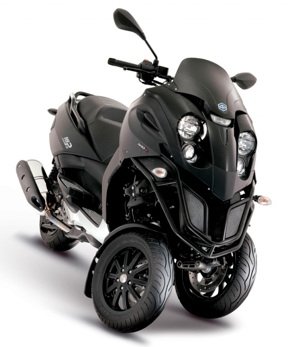
Models
While the situation is more complex overseas, in the USA the MP3 has been sold in a two main body styles. The original style was more rounded and went on sale in the USA for 2007 as the MP3 250. Then the MP3 400 followed for 2008 (same machine but with a larger motor). Simultaneously, Piaggio announced a new and much more aggressively styled MP3 500 which was really an entirely different scooter. Overseas, this “aggressive” MP3 500 is sold as the Gilera Fuoco. All of these MP3 models were dropped after 2013 in the USA.
Piaggio then took a couple years off (2014 – 2015) and then revived the original style with moderate updates for 2016 with the 500cc motor and called this model the MP3 500 Sport. So the 2016 and newer MP3 500’s are basically the motor of 2008-2013 MP3 500 in the body of the original MP3.
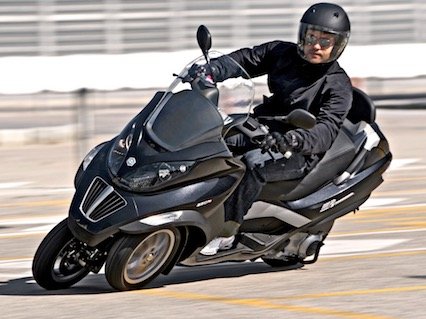
Motors
The original MP3 250 used a 244cc version of Piaggio’s QUASAR motor. In the MP3, this motor provides good acceleration off the line, but it a bit flat on the top end due to the weight and wind drag of this scooter.
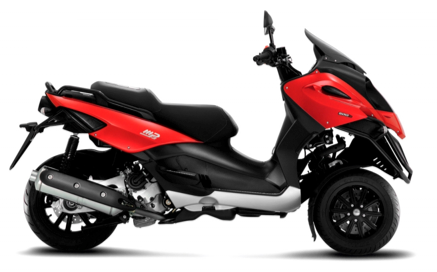
The larger MP3 scooters (400 and 500 models) use 389cc and 492cc versions of Piaggio’s largest motor – the MASTER engine. The 400 model (34 hp) and 500 model (40.1 hp) both do quite well on the top end as you’d expect. The 400 model reaches a top speed around 80 mph, while the MP3 500 manages 90 mph. While all of these motors are nice liquid cooled, 4-valve, fuel injected designs, the MASTER powered variants are more well rounded machines. The original MP3 250 is easily the slowest of the bunch, and not well suited for highway travel.
Storage & Convenience
Underneath the MP3’s large seat is a great storage area that can accommodate two full face helmets or lots of other gear. There’s also a glovebox for smaller items and the aggressive MP3 Sport 500 also has a ‘grab rail’ around the back end that can be quite handy for securing items behind the driver. Storage varies a bit from model to model, but generally it is quite generous with the large seat revealing a surprisingly generous cavern underneath. The MP3 also offers good wind protection, with it’s large front fascia and integrated tinted windscreen diverting most of the breeze.
 Comparison
Comparison
Overall, the MP3 appeals to a unique audience. These scooters aren’t cheap at $7-11K, but they accomplish their intended purpose quite well. They brake extremely well and offer unsurpassed safety over rough or slippery roads. They are also extremely fun to drive. The 400 and 500 models provide an excellent all around combination of solid power, excellent brakes, stable and easy handling and a great amount of storage, while the MP3 250 provides a way to take the price down a notch for those not needing interstate capability. All of the MP3’s are a unique package that is very easy to live with. Anyone who can swing the initial purchase price will find these machines to be a joy to live with.
Pros:
- A blast to drive
- Style doesn’t suit everyone
- Unsurpassed braking and handling
- Large underseat storage
Cons:
- Expensive
- Heavy / Bulky
Links:
MP3 Service Manual – Valuable info for wrenching on your MP3 250
MotorscooterGuide Forums – Visit the forums on this site to chat about this scoot.
MP3 500 Review – Nice review by Motorcycle USA
ModernVespa – These forums are a good spot to find other owners
Key Specs – MP3 250 / 400 / 500:
- Engine: Single cylinder 244cc, 389cc or 492cc liquid cooled 4-valve, 4-stroke.
- Power: 22.5 HP (244cc), 34 HP (389cc), 40.1 HP (492.7cc)
- Transmission: CVT
- Bore & Stroke: 72mm x 60mm (244.3cc), 69mm x 85.5mm (398.9cc), 71.12mm x 94mm (492.7cc)
- Fuel Delivery: Electronic fuel injection
- Wheelbase: 58.6” (250 model) or 61” (400 & 500 models)
- Weight: 450 / 538 / 577 lbs (250, 400 and 500 models)
- Starter: Electric
- Seat height: 30.7” (250 model) or 30.9” (400 & 500 models)
- Fuel Tank: 3.2 Gallon / 5 Liters
- Front Brakes: Dual 240mm disc brakes with two piston calipers
- Rear Brake: Single 240mm disc (280mm on 500 model) with two piston caliper
- Front Suspension: Parallelogram with 3.35” (85mm) travel
- Rear Suspension: Dual shocks, adjustable preload, 4.3” (110mm) travel
- Front Tires: 120/70-12
- Rear Tires: 130/70-12 (250 model), 140/70-14 (400 model), 130/70-14 (500 model)

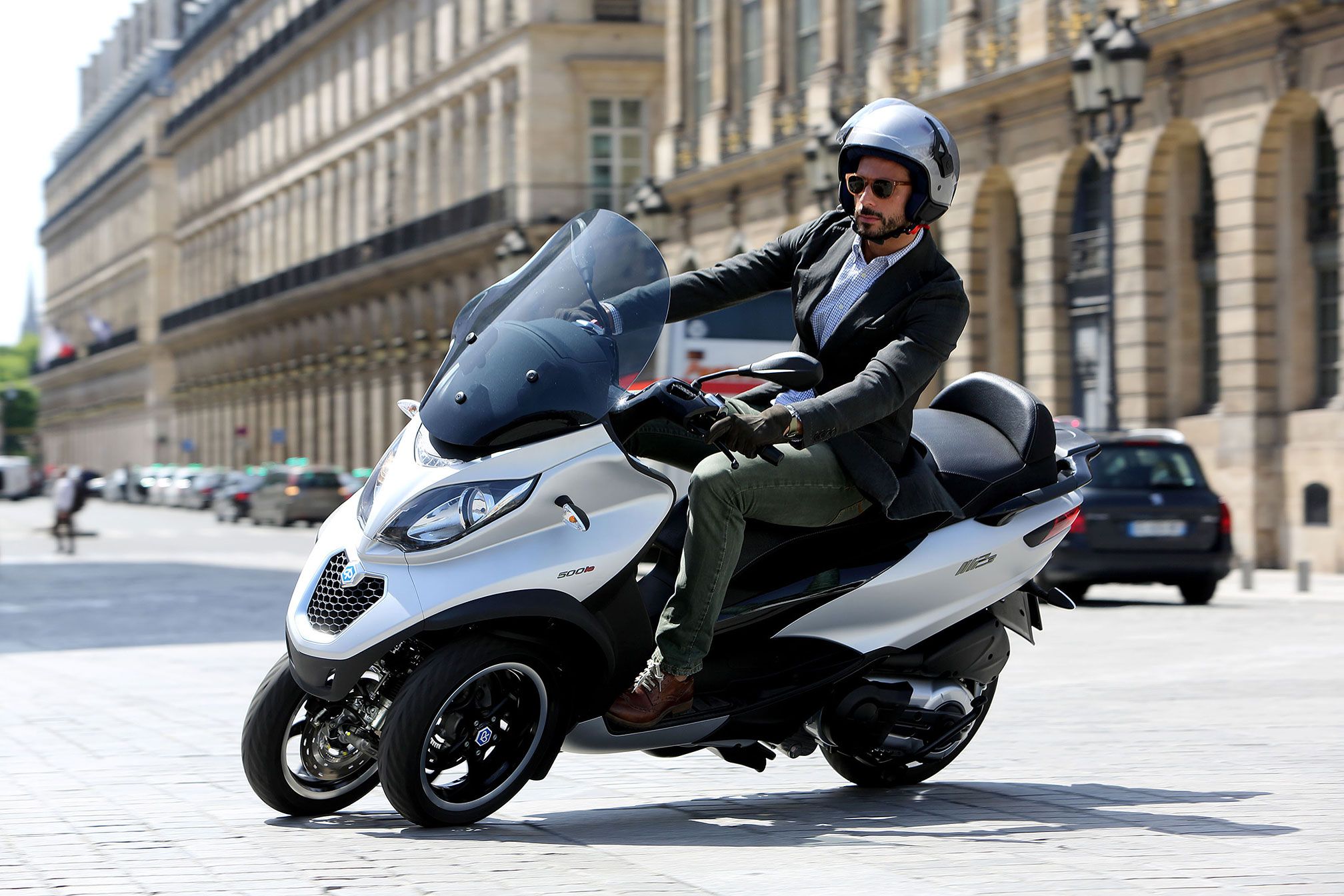
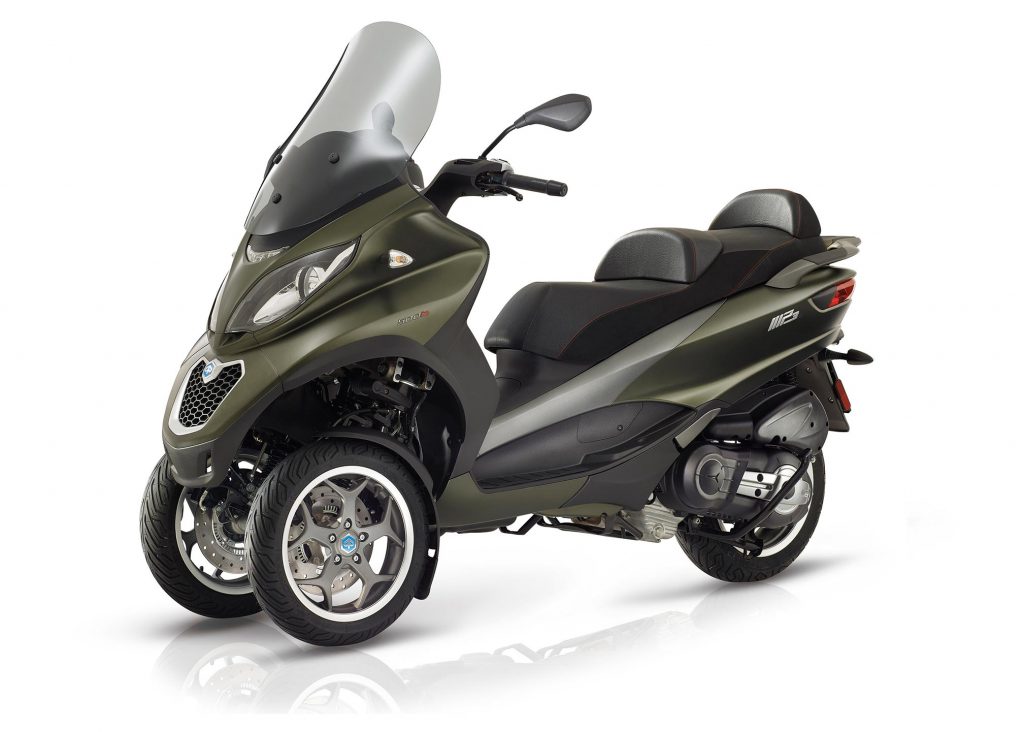
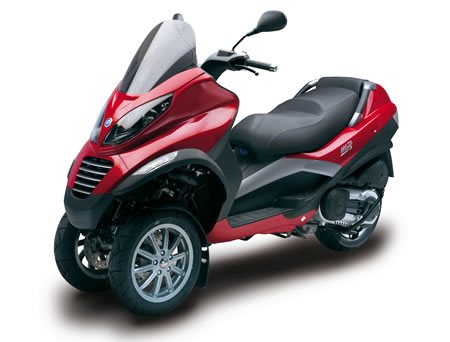 Comparison
Comparison